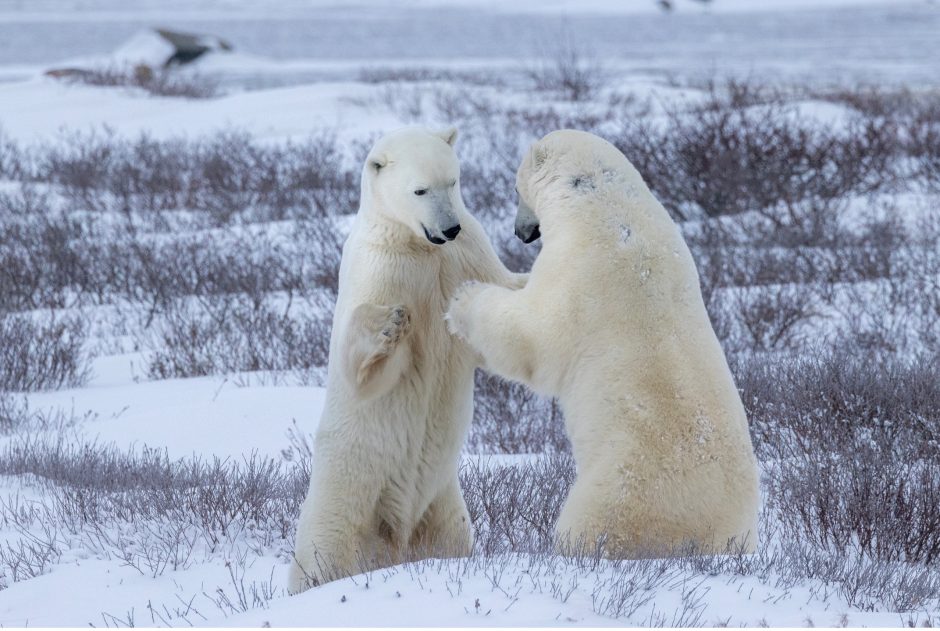
What is the Right Shutter Speed to Photograph Sparring Bears?
Notice how I didn’t start off by saying “the best” shutter speed. Honestly, even saying “right” is a bit tricky, as there are several things to consider beyond shutter speed to ensure you’re getting it right.
If you ignore aperture and ISO, simply to do everything in your power to prioritize a fast shutter speed, there is a good chance you’re going to miss the shot just as if you were to have the wrong shutter speed in the first place.
Therefore, shutter speed can be your priority amongst the golden triangle of aperture and ISO, but you still have to take aperture and ISO into account. So let’s start off getting the cat out of the bag and talk about the shutter speed you’re aiming for when it comes to sparring bears.
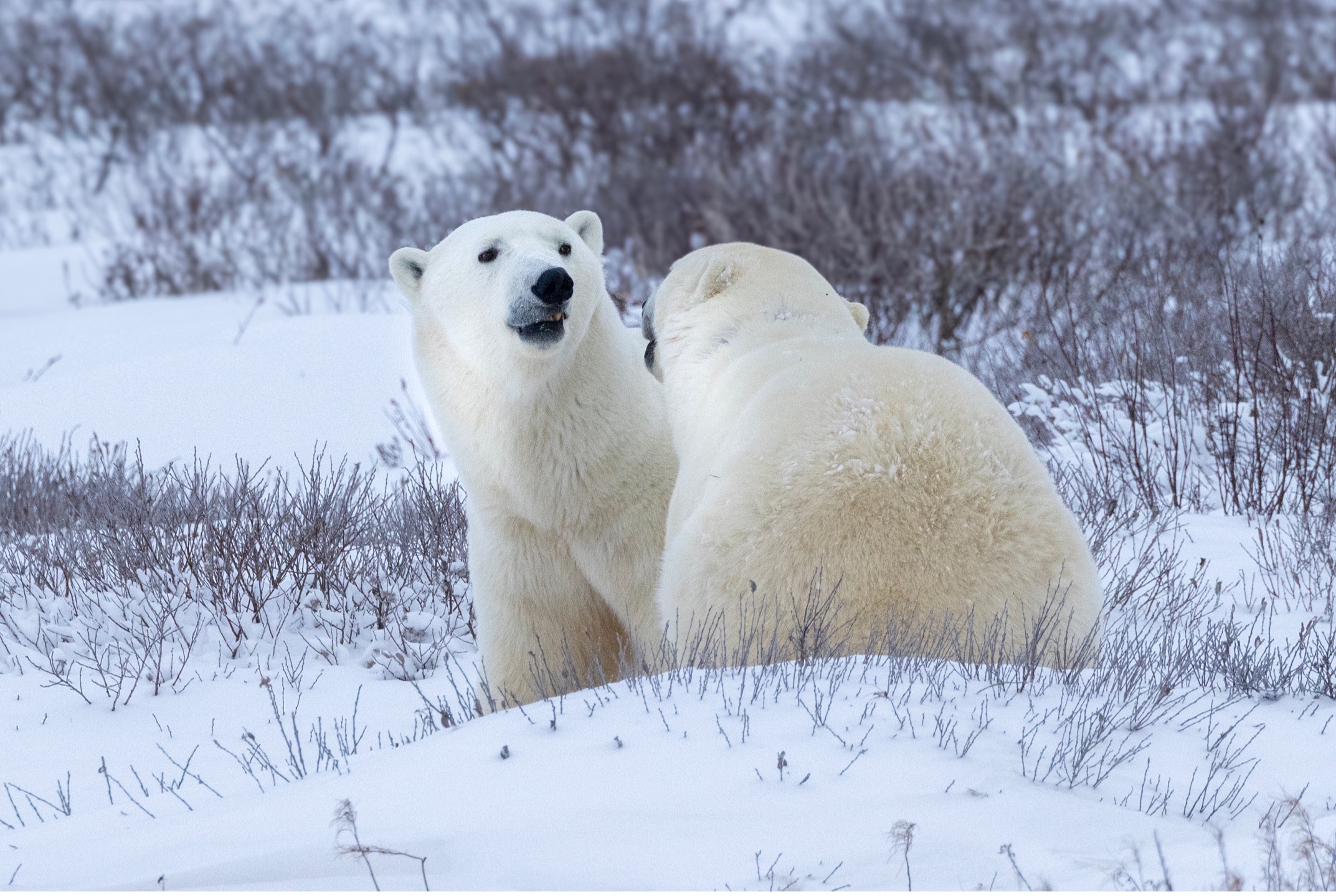
Cutting Straight to it
In my mind you want to start off with a pretty safe shutter speed. When I say safe and sparring bears whether you’re photographing polar bears in Churchill or brown bears and coastal Alaska, I’m talking about shutter speeds like 1/1250th of a second or even 1/1500th of a second.
Pro Tip: Don’t stop reading here, as you MUST consider aperture and ISO at the same time…I get to that shortly…
In my mind, this is your goal shutter speed. However, if conditions allow, you could even take the photo at faster shutter speeds, which might be possible when you have a really fast lens or lots of bright daylight to buffer out an extraordinarily fast shutter speed like 1/2000th of a second or even 1/2500th of a second.
However, in my years of photographing bears, I found that 1/1500 is pretty darn good–maybe “ideal.” And if I’m given enough light such that I could go even faster, I oftentimes prefer to decrease my ISO instead so that I can get a better quality shot.
But Don’t Forget about Aperture
Aperture refers to the depth of field you’re giving to these bears. In other words, how much of the scene is in focus.
Generally, I find that typical portrait settings work quite well. I’m talking about your f/5 .6 maybe even f/4. These apertures will let in a lot of light, while also isolating your subject from the background in order to yield a nice blur behind your bears. However, if the bears fill over 50% of the frame (think of it like this–are the bears occupying over 50% of the pixels?) I might bump this up to f/8 to ensure the entire bear(s) are in focus.
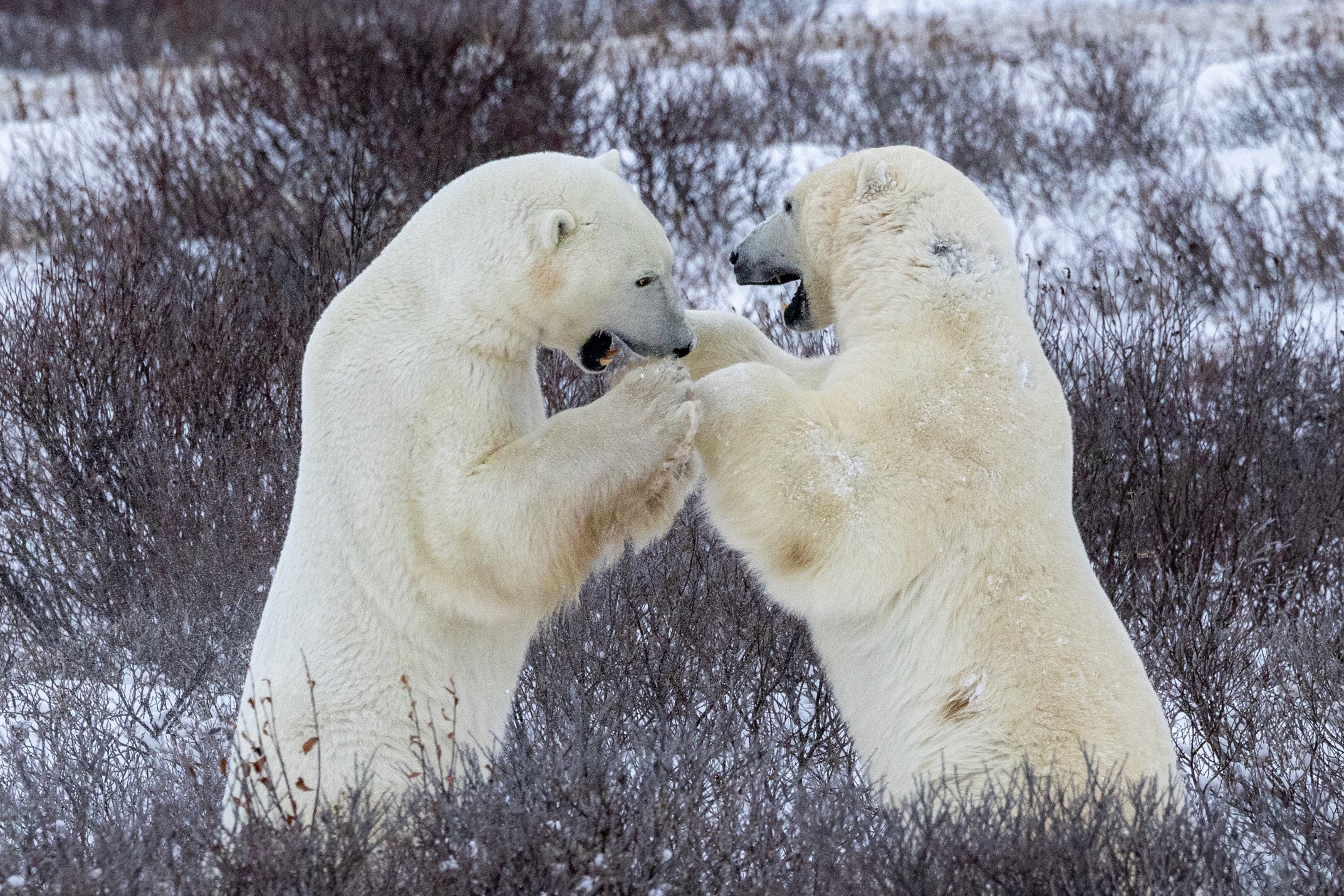
The thing you wanna lookout for is whether you are creating an overly shallow depth the field, such that not all of the parts of the bears are in focus.
It’s important that you try to review your photos for sharpness as feasible.
As you review your photos and try to ascertain whether they’re in focus, you will need to figure out whether a lack of sharpness if motion blur or simply a lack of depth of field. In other words, if you have a fuzzy photo, is it because the focus point is in the wrong place, are you shooting too slow, or do you need to increase your depth of field? Practice makes perfect in this case.
Similarly if you’re shooting at deep depth the field like f/8, f/11, and maybe even more, you want to make sure that there is enough light in the scene to support the fast shutter speeds we’re talking about.
For instance, if you have your ISO set on auto, you may find that f/8 and 1/1500th of a second is necessitating ISO 3200. This is getting pretty high. Thus, rather than dropping my shutter speed to below 1/1250th of a second, I’m likely going to drop my aperture from f/8 to, say, f/5.6.
To give you real numbers as an example, if I drop my aperture from f/8 to f/5.6, my ISO would go down from 3200 to 1600 with the exact same lighting conditions, based on the rules of aperture and ISO. If this is new to you or doesn’t quite make sense, I recommend reading up further on my article about Aperture here.
This is a good segue into monitoring ISO while maintaining a fast shutter speed.
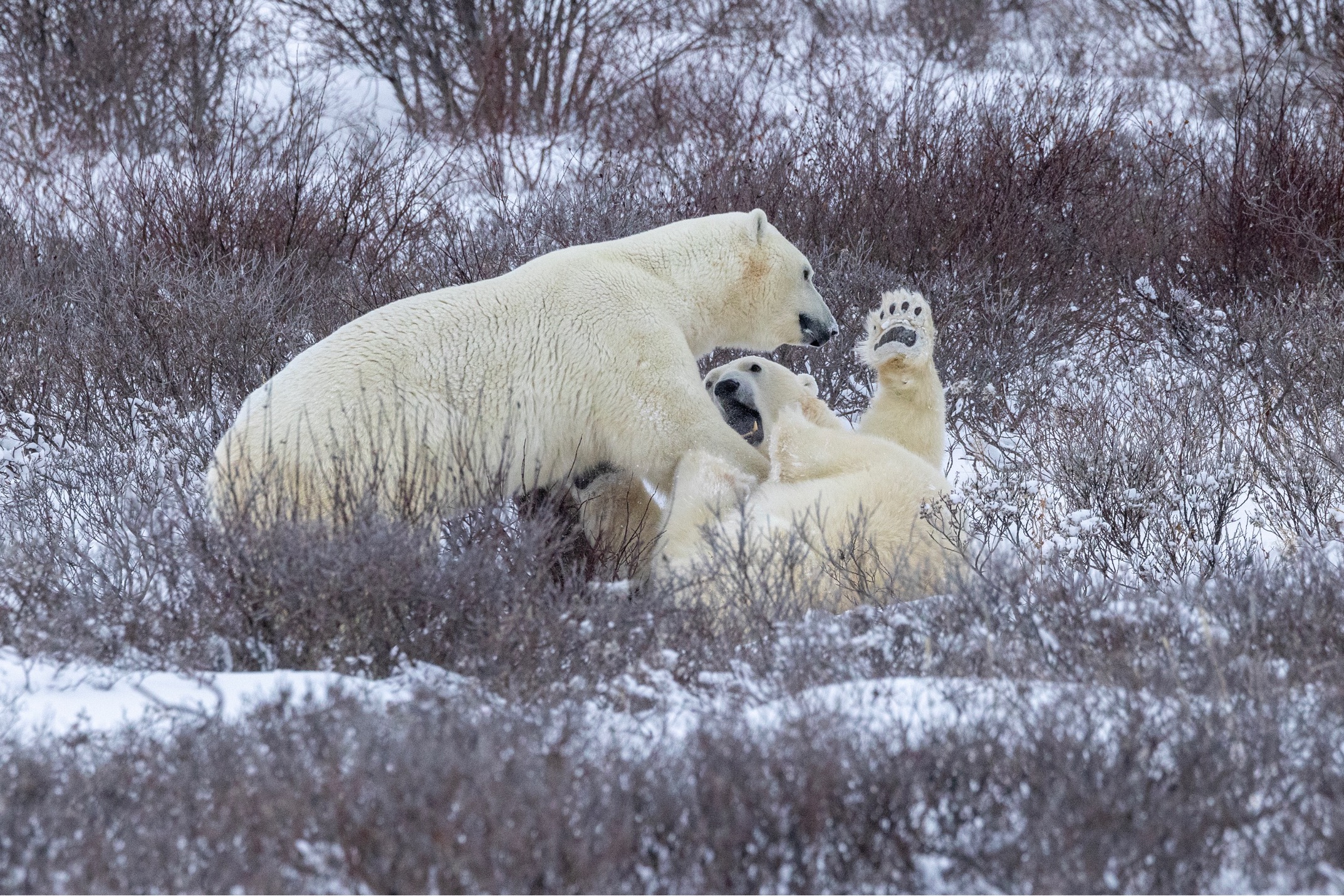
Monitoring your ISO
Often times ISO has been regarded as a tool to simply take faster and faster photos. In fact, this is the origin of fast, film speeds, like ASA ratings.
In today’s digital world, ISO can do many things by allowing the sensor to be more sensitive to light. High ISOs even allow for a deeper depth of field, which can be beneficial at times.
However, I will caution you against high ISOs, because they usually result in a steady degradation of the photo. You’ll begin to see an appearance of noise and grain, like a course sandpaper or light texture over the photo.
Photo editing programs have recently come out with incredible de-noise technology, making high ISO‘s more helpful and more salvageable in the post processing stage. However, you don’t want to shoot on high as ISO’s just willy-nilly. For most cameras out there ISO 1600 is my upper threshold. In other words, I will allow my ISO to go higher and higher (e.g., from 200 to 400, 400 to 800) as I ramp up the shutter speed or increase the depth of field. But once I’m in the 1600 or 3200 range I start to become very vigilant and start to hedge my bets by decreasing my f/number or, in extreme cases, reducing my shutter speed in front of moving bears.
If you are interested in learning more about my manual plus auto ISO technique for all of my photography check out an article I wrote here about my favorite camera mode for shooting wildlife landscape, and travel.
A Return to Shutter Speed
As we’re coming back to shutter speed, let’s think about the considerations for when you would need to shoot at a lower shutter speed for sparring bears. In other words, when would I want to shoot slower than 1/1250 of a second?
Well, I really try not to, but in some cases the light is just so limited that I’m forced into ISO 25,000 or above. Obviously even with the greatest noise technology today in Photoshop and Lightroom this is still an unacceptable ISO.
Therefore, if I’m forced into a slower shutter speed, or else I just simply won’t get the photo, I may try to embrace it and instead start to deliberately have a slow shutter speed. This way, I actually blur a little bit of the motion of the bears intentionally.
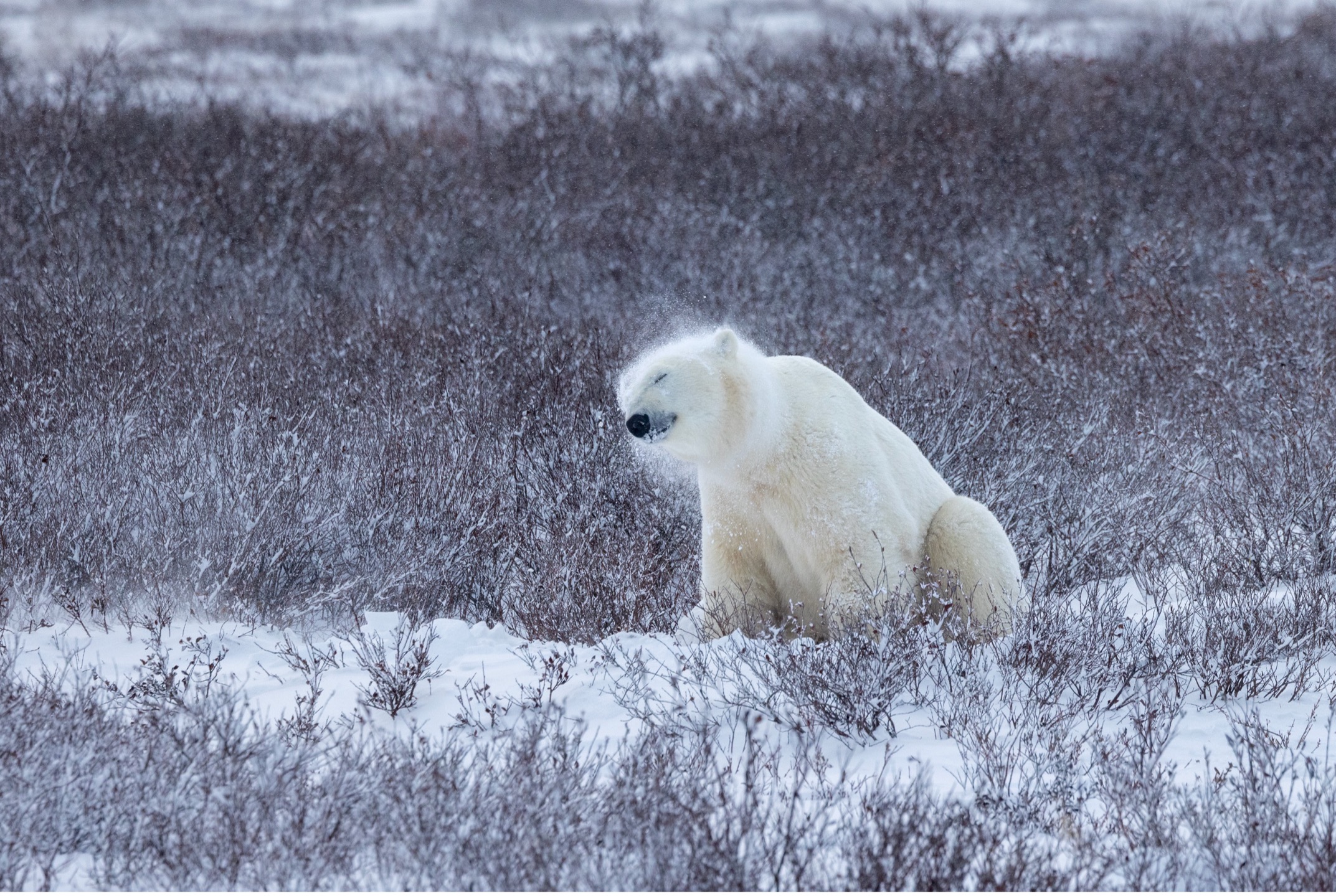
This isn’t my first go to type of shot, but it can be fun, creative, and actually round out your portfolio quite well.
The speed I’m talking about here is usually at the extreme other end of the spectrum–something like 1/100th of the second, which allows me to get some sharpness with the bears themselves, but also a noticeable blur. This blur is usually with the arms or head that might be moving fast enough to blur within that 100th of a second of exposure.
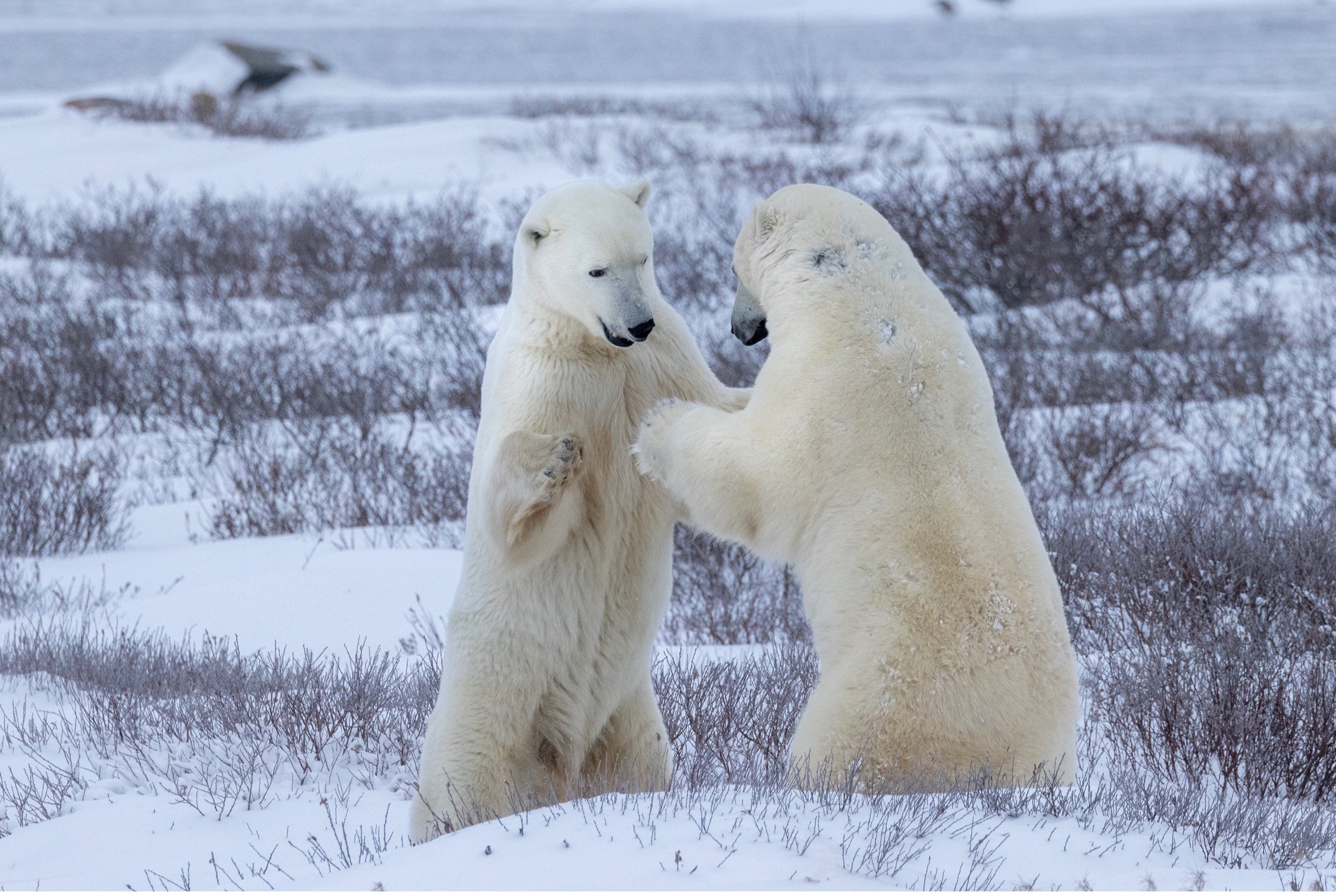
So to summarize, the right shutter speed is really one that takes into account this golden trifecta of camera settings (shutter speed, aperture, and ISO). In these instances of sparring bears–which I of course hope you get to see on a proper polar bear photo expedition–shutter speed will be your top priority, but not at the expense of a botched aperture or ISO.
Aim for 1/1250th, go a little faster if you can, but be ready to adjust your aperture and ISO based on conditions.
Best of luck out there!

Court
2 Comments

James Maxwell
March 9, 2024 at 5:14 pm

Court Whelan, Ph.D.
March 13, 2024 at 6:28 am
Court,
Getting ready for Alaska this summer, Bears photo trip and Safari and was wondering if taking a 135mm or 85mm F2.8 lens would be worth it? Just caught your Bears around the world daily dose and was just wondering if either of these lens would be worth bringing along?
Hi James, I think those lenses would be really fun! Typically I’m used to the 135mm and 85mm as being a bit bigger aperture, like f/1.4 and f/1.2. If you’re looking at f/2.8 they’re a tad less impactful. To me a 70-200 f/2.8 would be king in these scenarios instead of these primes. Nevertheless, a 135mm f/2.8 would be really fun to help with a shallow depth of field!